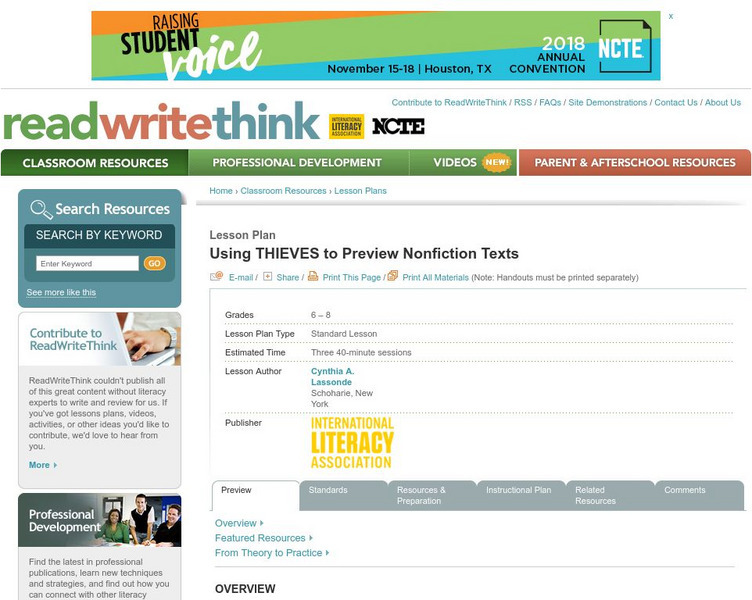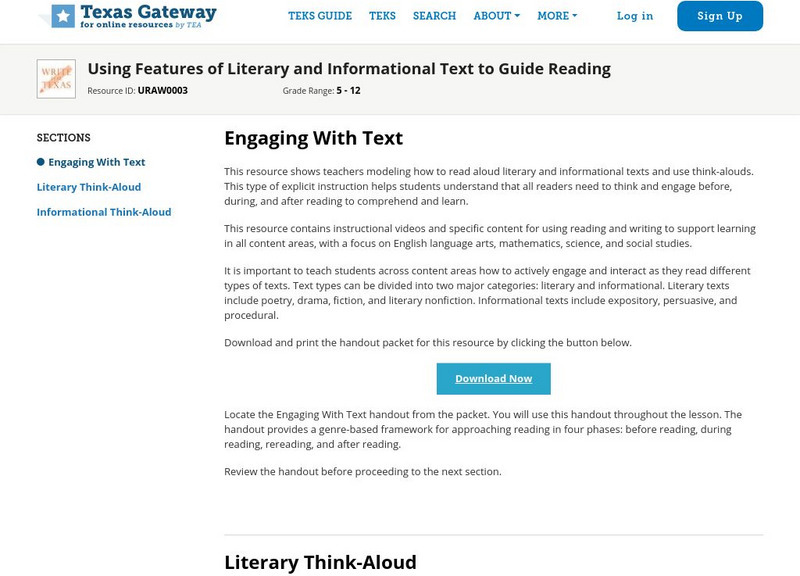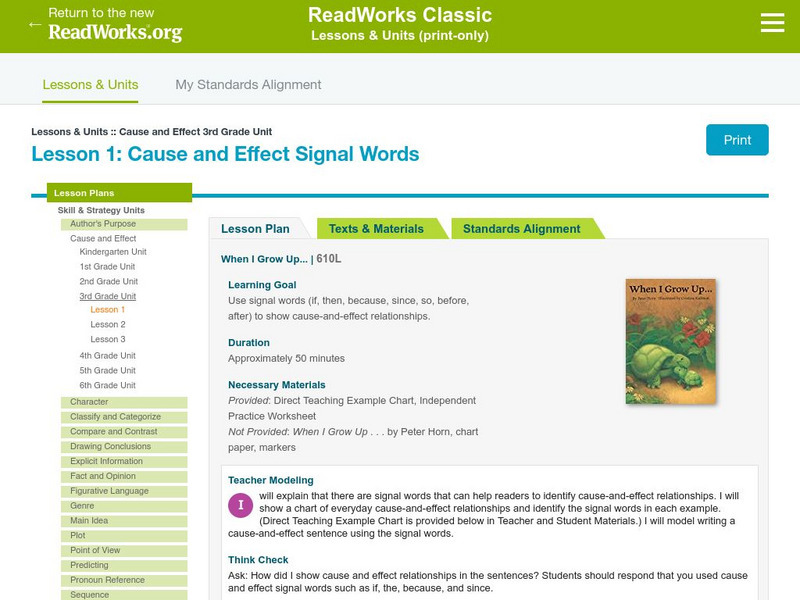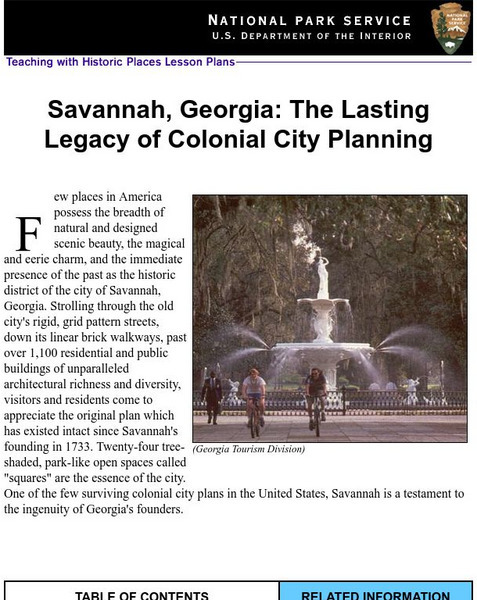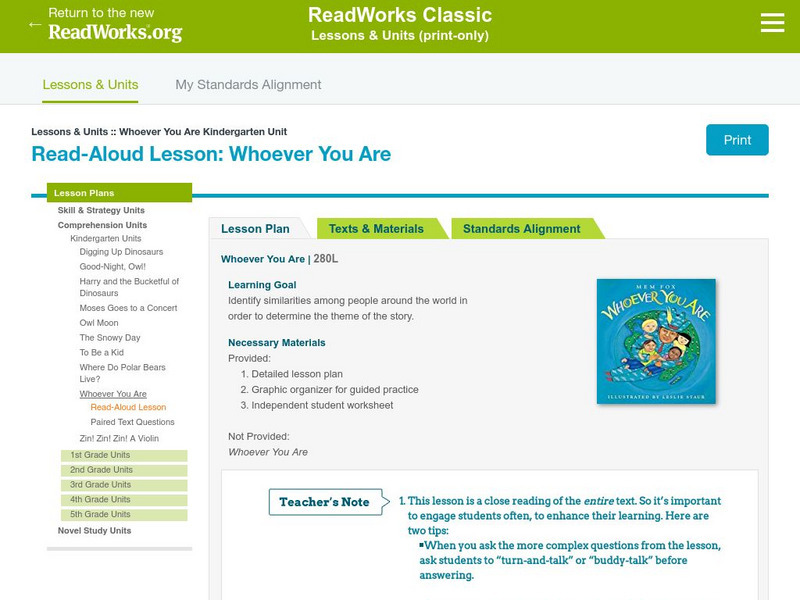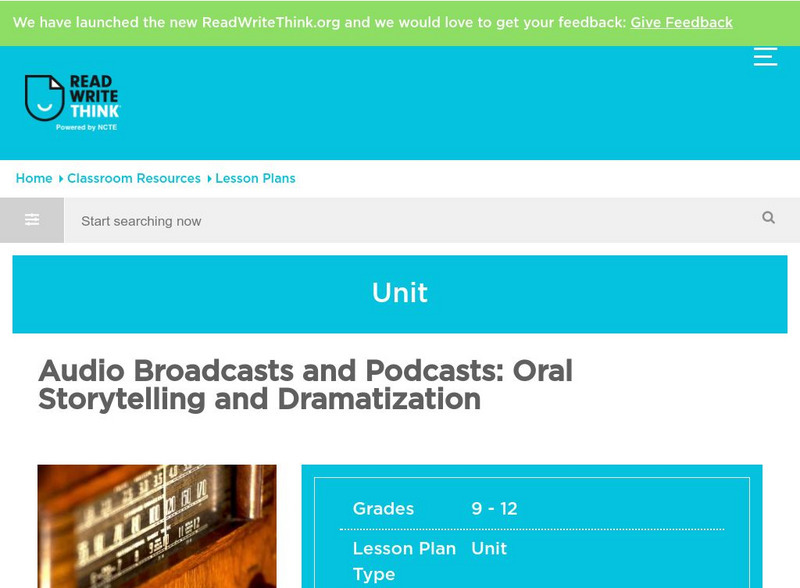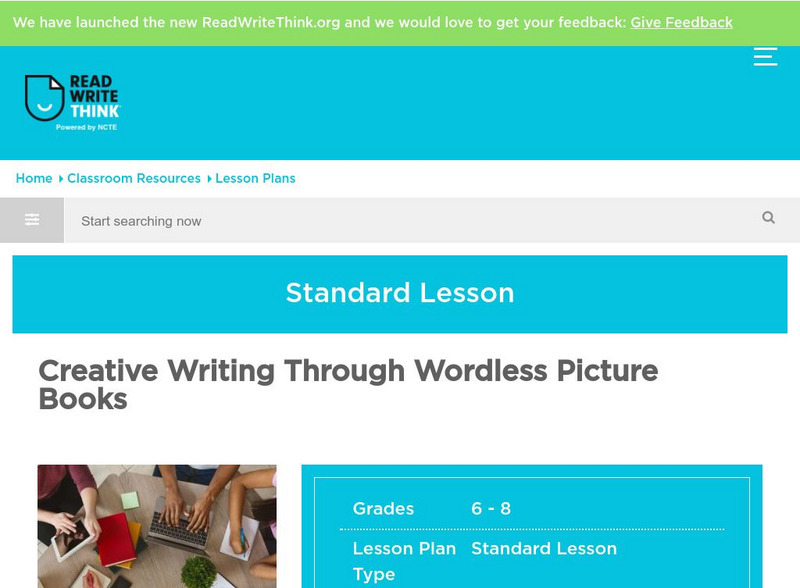Hi, what do you want to do?
National Humanities Center
Teaching The Great Gatsby: A Common Core Close Reading Seminar
The 41 slides in a professional development seminar model how to use close reading techniques to examine the many layers of F. Scott Fitzgerald's The Great Gatsby. In addition to passages from the novel, slides provide biographical...
New York State Education Department
TASC Transition Curriculum: Workshop 10
How have educational standards evolved? Educators of adults examine expectations in the 10th workshop out of 15 to better determine how standards have grown. Participants respond to a variety of sample questions to determine how they...
New York State Education Department
TASC Transition Curriculum: Workshop 11
You'll C-E-R a difference in classroom achievement after using a helpful instructional activity. Designed for economics, civics, government, and US history classes, participants practice using the CER model to craft arguments about...
EngageNY
TASC Transition Curriculum: Workshop 12
How can opinions slant facts? Workshop participants learn how to examine primary and secondary sources and identify the author's point of view. They also examine how visual art impacts the meaning and rhetoric of sources. Full of...
Information Fluency
Imsa 21st Century Information Fluency (21 Cif) Portal
The 21st Century Information Fluency (21CIF) Portal was developed by the Illinois Mathematics and Science Academy (IMSA) to improve Internet search skills for the advancement of information literacy. The goal of this project is to help...
Information Fluency
Imsa 21st Century Information Fluency (21 Cif) Portal
The 21st Century Information Fluency (21CIF) Portal was developed by the Illinois Mathematics and Science Academy (IMSA) to improve Internet search skills for the advancement of information literacy. The goal of this project is to help...
ReadWriteThink
Read Write Think: Using Thieves to Preview Nonfiction Texts
Contains plans for three lessons that introduce a nonfiction prereading strategy with the acronym THIEVES, which stands for Title, Headings, Introduction, Every first sentence, Visuals and vocabulary, End Questions, and Summary. In...
Texas Education Agency
Texas Gateway: Using Features of Literary & Informational Text to Guide Reading
A learning module that teaches students about using text features to guide reading in three mini lessons: Engaging with Text, Literary Think-Aloud, and Informational Think-Aloud. Download a PDF with lesson plans and printable handouts...
PBS
Pbs Learning Media: Molly of Denali: Dream Tube Lesson Plan
Use this comprehensive activity as part of a comprehensive literacy, STEM, or social studies unit in which children will be using informational texts. In the "Dream Tube" animated story from the PBS Kids series Molly of Denali, Molly and...
Read Works
Read Works: Lesson: Cause and Effect
[Free Registration/Login Required] Using the book "When I Grow Up", this lesson plan aids students in learning about cause and effect relationships and the words that signify them.
Curated OER
National Park Service: Savannah, Ga: Lasting Legacy of Colonial City Planning
The site explores the colonial history of the city of Savannah, Georgia. This interactive lesson has excellent information, an inquiry question, historical context, maps, readings, images, and activities.
ReadWriteThink
Read Write Think: Hoax/no Hoax? Online Comprehension and Evaluation Strategies
Students use research-based comprehension strategies to read and evaluate websites, and practice analysis by comparing hoax and real websites and by identifying false or misleading information. SL.11-12.2 Eval&Integrate sources
ReadWriteThink
Read Write Think: Building Word Knowledge Through Informational Websites
A lesson through which students identify, understand and work with important vocabulary words found in an online article on biodiversity. Based on the "Ten Important Words Plus" strategy that teachers can employ as part of vocabulary and...
US National Archives
Nara: Apollo 11 Flight Plan
Read the minute-by-minute flight plan of Apollo 11. Links to other information about Apollo 11.
ReadWriteThink
Read Write Think: Expository Escapade: Detective's Handbook
Working on higher-level thinking skills with your readers is made easier with this lesson. You will have your students connect with and analyze a mystery story at their grade-appropriate level. Lesson plan, printable worksheets, and...
Read Works
Read Works: Read Aloud Lesson: Whoever You Are
In this read-aloud lesson, students will identify similarities among people around the world in order to determine the theme of the story. Included is a detailed lesson plan, graphic organizer for guided practice, and an independent...
ReadWriteThink
Read Write Think: Discovering Memory Li Young Lee's Poem "Memonic" and the Brain
Contains plans for eight cross-curricular lessons that teach about memory and the brain using Li-Young Lee's poem "Mnemonic." In addition to objectives and standards, this instructional plan contains links to PDF handouts and sites used...
ReadWriteThink
Read Write Think: Playing With Genre Through Newspapers and Short Stories
Contains plans for three lessons that ask young scholars to compare narrative writing (short stories) to expository writing (news articles) in order to understand what makes each genre unique. In addition to objectives and standards,...
Read Works
Readworks: Read Aloud Lesson: Stellaluna
Compare Stellaluna's experience of living like a bird with her experience of living like a bat. Included in this lesson are a detailed lesson plan, a graphic organizer, and a student worksheet.
ReadWriteThink
Read Write Think: Oral Storytelling and Dramatization
Students begin this lesson by discussing what makes a good, vivid story and creating a working checklist of the criteria for a good story. They explore background information about the Mercury Theatre production of the "War of the...
ReadWriteThink
Read Write Think: Creative Writing Through Wordless Picture Books
Need help planning ways to creatively teach your young scholars chronological order? Here's a great place to start. While the site is specifically geared toward the middle school student, it is a teaching idea which could easily be...
ReadWriteThink
Read Write Think: Draw a Story: Stepping From Pictures to Writing
Help young students move from drawing pictures into writing simple stories. Good plan for having students put pictures in sequential order and teaching them about sequential order.
ReadWriteThink
Read Write Think: Reading Informational Texts Using the 3 2 1 Strategy
Students can count on using the 3-2-1 strategy to help them successfully comprehend and write about an informational text.
ReadWriteThink
Read Write Think: Digging Up Details on Worms: Using Science in an Inquiry Study
A lesson plan based on a study unit of earthworms, using the inquiry model to integrate scientific processes with literacy practices. Instruction plans, related resources, and standards are included.











